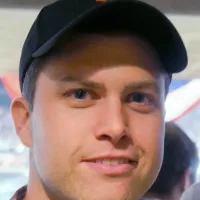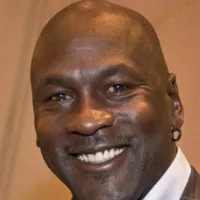November 09, 1934
Carl Edward Sagan (/ˈseɪɡən/; SAY-gən; November 9, 1934 – December 20, 1996) was an American astronomer, planetary scientist and science communicator. His best known scientific contribution is his research on the possibility of extraterrestrial life, including experimental demonstration of the production of amino acids from basic chemicals by exposure to light. He assembled the first physical messages sent into space, the Pioneer plaque and the Voyager Golden Record, which were universal messages that could potentially be understood by any extraterrestrial intelligence that might find them. He argued in favor of the hypothesis, which has since been accepted, that the high surface temperatures of Venus are the result of the greenhouse effect.
November 09, 1934
Carl Edward Sagan was born on November 9, 1934, in the Bensonhurst neighborhood of New York City's Brooklyn borough. His mother, Rachel Molly Gruber (1906–1982), was a housewife from New York City; his father, Samuel Sagan (1905–1979), was a Ukrainian-born garment worker who had emigrated from Kamianets-Podilskyi (then in the Russian Empire). Sagan was named in honor of his maternal grandmother, Chaiya Clara, who had died while giving birth to her second child; she was, in Sagan's words, "the mother she [Rachel] never knew." Sagan's maternal grandfather later married a woman named Rose, who Sagan's sister, Carol, would later say, was "never accepted" as Rachel's mother because Rachel "knew she [Rose] wasn't her birth mother." Sagan's family lived in a modest apartment in Bensonhurst. He later described his family as Reform Jews, one of the more liberal of Judaism's four main branches. He and his sister agreed that their father was not especially religious, but that their mother "definitely believed in God, and was active in the temple [...] and served only kosher meat." During the worst years of the Depression, his father worked as a movie theater usher.
1947
In 1947, the year that inaugurated the "flying saucer" craze, the young Sagan suspected the "discs" might be alien spaceships. Sagan's interest in UFO reports prompted him on August 3, 1952, to write a letter to U.S. Secretary of State Dean Acheson to ask how the United States would respond if flying saucers turned out to be extraterrestrial. He later had several conversations on the subject in 1964 with Jacques Vallée. Though quite skeptical of any extraordinary answer to the UFO question, Sagan thought scientists should study the phenomenon, at least because there was widespread public interest in UFO reports.
1947
Sagan's parents nurtured his growing interest in science, buying him chemistry sets and reading matter. But his fascination with outer space emerged as his primary focus, especially after he had read science fiction by such writers as H. G. Wells and Edgar Rice Burroughs, stirring his curiosity about the possibility of life on Mars and other planets. According to biographer Ray Spangenburg, Sagan's efforts in his early years to understand the mysteries of the planets became a "driving force in his life, a continual spark to his intellect, and a quest that would never be forgotten." In 1947, Sagan discovered the magazine Astounding Science Fiction, which introduced him to more hard science fiction speculations than those in the Burroughs novels. That same year, mass hysteria developed about the possibility that extraterrestrial visitors had arrived in flying saucers, and the young Sagan joined in the speculation that the flying "discs" people reported seeing in the sky might be alien spaceships.
1948
Sagan attended David A. Boody Junior High School in his native Bensonhurst and had his bar mitzvah when he turned 13. In 1948, when he was 14, his father's work took the family to the older semi-industrial town of Rahway, New Jersey, where he attended Rahway High School. He was a straight-A student but was bored because his classes did not challenge him and his teachers did not inspire him. His teachers realized this and tried to convince his parents to send him to a private school, with an administrator telling them, "This kid ought to go to a school for gifted children, he has something really remarkable." However, his parents could not afford to do so. Sagan became president of the school's chemistry club, and set up his own laboratory at home. He taught himself about molecules by making cardboard cutouts to help him visualize how they were formed: "I found that about as interesting as doing [chemical] experiments." He was mostly interested in astronomy, learning about it in his spare time. In his junior year of high school, he discovered that professional astronomers were paid for doing something he always enjoyed, and decided on astronomy as a career goal: "That was a splendid day—when I began to suspect that if I tried hard I could do astronomy full-time, not just part-time." Sagan graduated from Rahway High School in 1951.
1954
As an honors-program undergraduate, Sagan worked in the laboratory of geneticist H. J. Muller and wrote a thesis on the origins of life with physical chemist Harold Urey. He also joined the Ryerson Astronomical Society. In 1954, he was awarded a Bachelor of Liberal Arts with general and special honors in what he quipped was "nothing." In 1955, he earned a Bachelor of Science in physics. He went on to do graduate work at the University of Chicago, earning a Master of Science in physics in 1956 and a Doctor of Philosophy in astronomy and astrophysics in 1960. His doctoral thesis, submitted to the Department of Astronomy and Astrophysics, was entitled Physical Studies of the Planets. During his graduate studies, he used the summer months to work with planetary scientist Gerard Kuiper, who was his dissertation director, as well as physicist George Gamow and chemist Melvin Calvin. The title of Sagan's dissertation reflected interests he had in common with Kuiper, who had been president of the International Astronomical Union's commission on "Physical Studies of Planets and Satellites" throughout the 1950s.
1957
Sagan was married three times. In 1957, he married biologist Lynn Margulis. The couple had two children, Jeremy and Dorion Sagan. Their marriage ended in 1964. Sagan married artist Linda Salzman in 1968 and they had a child together, Nick Sagan, and divorced in 1981. During these marriages, Carl Sagan focused heavily on his career, a factor which may have contributed to Sagan's first divorce. In 1981, Sagan married author Ann Druyan and they later had two children, Alexandra (known as Sasha) and Samuel Sagan. Carl Sagan and Druyan remained married until his death in 1996.
1958
In 1958, Sagan and Kuiper worked on the classified military Project A119, a secret United States Air Force plan to detonate a nuclear warhead on the Moon and document its effects. Sagan had a Top Secret clearance at the Air Force and a Secret clearance with NASA. In 1999, an article published in the journal Nature revealed that Sagan had included the classified titles of two Project A119 papers in his 1959 application for a scholarship to University of California, Berkeley. A follow-up letter to the journal by project leader Leonard Reiffel confirmed Sagan's security leak.
1958
Sagan remained hopeful that the natural NEO impact threat and the intrinsically double-edged essence of the methods to prevent these threats would serve as a "new and potent motivation to maturing international relations." Later acknowledging that, with sufficient international oversight, in the future a "work our way up" approach to implementing nuclear explosive deflection methods could be fielded, and when sufficient knowledge was gained, to use them to aid in mining asteroids. His interest in the use of nuclear detonations in space grew out of his work in 1958 for the Armour Research Foundation's Project A119, concerning the possibility of detonating a nuclear device on the lunar surface.
1961
After the publication of Sagan's Science article, in 1961, Harvard University astronomers Fred Whipple and Donald Menzel offered Sagan the opportunity to give a colloquium at Harvard and subsequently offered him a lecturer position at the institution. Sagan instead asked to be made an assistant professor, and eventually Whipple and Menzel were able to convince Harvard to offer Sagan the assistant professor position he requested. Sagan lectured, performed research, and advised graduate students at the institution from 1963 until 1968, as well as working at the Smithsonian Astrophysical Observatory, also located in Cambridge, Massachusetts.
1961
From 1960 to 1962, Sagan was a Miller Fellow at the University of California, Berkeley. Meanwhile, he published an article in 1961 in the journal Science on the atmosphere of Venus, while also working with NASA's Mariner 2 team, and served as a "Planetary Sciences Consultant" to the RAND Corporation.
1962
Sagan's contributions were central to the discovery of the high surface temperatures of the planet Venus. In the early 1960s no one knew for certain the basic conditions of Venus' surface, and Sagan listed the possibilities in a report later depicted for popularization in a Time Life book Planets. His own view was that Venus was dry and very hot as opposed to the balmy paradise others had imagined. He had investigated radio waves from Venus and concluded that there was a surface temperature of 500 °C (900 °F). As a visiting scientist to NASA's Jet Propulsion Laboratory, he contributed to the first Mariner missions to Venus, working on the design and management of the project. Mariner 2 confirmed his conclusions on the surface conditions of Venus in 1962.
1966
In 1966, Sagan was a member of the Ad Hoc Committee to Review Project Blue Book, the U.S. Air Force's UFO investigation project. The committee concluded Blue Book had been lacking as a scientific study, and recommended a university-based project to give the UFO phenomenon closer scientific scrutiny. The result was the Condon Committee (1966–68), led by physicist Edward Condon, and in their final report they formally concluded that UFOs, regardless of what any of them actually were, did not behave in a manner consistent with a threat to national security.
1968
In 1968, Sagan was denied academic tenure at Harvard. He later indicated that the decision was very unexpected. The denial has been blamed on several factors, including that he focused his interests too broadly across a number of areas (while the norm in academia is to become a renowned expert in a narrow specialty), and perhaps because of his well-publicized scientific advocacy, which some scientists perceived as borrowing the ideas of others for little more than self-promotion. An advisor from his years as an undergraduate student, Harold Urey, wrote a letter to the tenure committee recommending strongly against tenure for Sagan.
1969
Sagan was acquainted with science fiction fandom through his friendship with Isaac Asimov, and he spoke at the Nebula Awards ceremony in 1969. Asimov described Sagan as one of only two people he ever met whose intellect surpassed his own, the other being computer scientist and artificial intelligence expert Marvin Minsky.
1969
Sociologist Ron Westrum writes that "The high point of Sagan's treatment of the UFO question was the AAAS' symposium in 1969. A wide range of educated opinions on the subject were offered by participants, including not only proponents such as James McDonald and J. Allen Hynek but also skeptics like astronomers William Hartmann and Donald Menzel. The roster of speakers was balanced, and it is to Sagan's credit that this event was presented in spite of pressure from Edward Condon." With physicist Thornton Page, Sagan edited the lectures and discussions given at the symposium; these were published in 1972 as UFO's: A Scientific Debate. Some of Sagan's many books examine UFOs (as did one episode of Cosmos) and he claimed a religious undercurrent to the phenomenon.
1970
Long before the ill-fated tenure process, Cornell University astronomer Thomas Gold had courted Sagan to move to Ithaca, New York, and join the recently hired astronomer Frank Drake among the faculty at Cornell. Following the denial of tenure from Harvard, Sagan accepted Gold's offer and remained a faculty member at Cornell for nearly 30 years until his death in 1996. Unlike Harvard, the smaller and more laid-back astronomy department at Cornell welcomed Sagan's growing celebrity status. Following two years as an associate professor, Sagan became a full professor at Cornell in 1970 and directed the Laboratory for Planetary Studies there. From 1972 to 1981, he was associate director of the Center for Radiophysics and Space Research (CRSR) at Cornell. In 1976, he became the David Duncan Professor of Astronomy and Space Sciences, a position he held for the remainder of his life.
1972
Sagan was associated with the U.S. space program from its inception. From the 1950s onward, he worked as an advisor to NASA, where one of his duties included briefing the Apollo astronauts before their flights to the Moon. Sagan contributed to many of the robotic spacecraft missions that explored the Solar System, arranging experiments on many of the expeditions. Sagan assembled the first physical message that was sent into space: a gold-plated plaque, attached to the space probe Pioneer 10, launched in 1972. Pioneer 11, also carrying another copy of the plaque, was launched the following year. He continued to refine his designs; the most elaborate message he helped to develop and assemble was the Voyager Golden Record, which was sent out with the Voyager space probes in 1977. Sagan often challenged the decisions to fund the Space Shuttle and the International Space Station at the expense of further robotic missions.
November 16, 1974
Sagan was a proponent of the search for extraterrestrial life. He urged the scientific community to listen with radio telescopes for signals from potential intelligent extraterrestrial life-forms. Sagan was so persuasive that by 1982 he was able to get a petition advocating SETI published in the journal Science, signed by 70 scientists, including seven Nobel Prize winners. This signaled a tremendous increase in the respectability of a then-controversial field. Sagan also helped Frank Drake write the Arecibo message, a radio message beamed into space from the Arecibo radio telescope on November 16, 1974, aimed at informing potential extraterrestrials about Earth.
1977
Because of his earlier popularity as a science writer from his best-selling books, including The Dragons of Eden, which won him a Pulitzer Prize in 1977, he was asked to write and narrate the show. It was targeted to a general audience of viewers, who Sagan felt had lost interest in science, partly due to a stifled educational system.
1979
The adult Sagan remained a fan of science fiction, although disliking stories that were not realistic (such as ignoring the inverse-square law) or, he said, did not include "thoughtful pursuit of alternative futures." He wrote books to popularize science, such as Cosmos, which reflected and expanded upon some of the themes of A Personal Voyage and became the best-selling science book ever published in English; The Dragons of Eden: Speculations on the Evolution of Human Intelligence, which won a Pulitzer Prize; and Broca's Brain: Reflections on the Romance of Science. Sagan also wrote the best-selling science fiction novel Contact in 1985, based on a film treatment he wrote with his wife, Ann Druyan, in 1979, but he did not live to see the book's 1997 motion-picture adaptation, which starred Jodie Foster and won the 1998 Hugo Award for Best Dramatic Presentation.
1980
In 1980, Sagan co-wrote and narrated the award-winning 13-part PBS television series Cosmos: A Personal Voyage, which became the most widely watched series in the history of American public television until 1990. The show has been seen by at least 500 million people across 60 countries. The book, Cosmos, written by Sagan, was published to accompany the series.
1981
On atheism, Sagan said in 1981:
June 1981
Sagan believed that the Drake equation, on substitution of reasonable estimates, suggested that a large number of extraterrestrial civilizations would form, but that the lack of evidence of such civilizations highlighted by the Fermi paradox suggests technological civilizations tend to self-destruct. This stimulated his interest in identifying and publicizing ways that humanity could destroy itself, with the hope of avoiding such a cataclysm and eventually becoming a spacefaring species. Sagan's deep concern regarding the potential destruction of human civilization in a nuclear holocaust was conveyed in a memorable cinematic sequence in the final episode of Cosmos, called "Who Speaks for Earth?" Sagan had already resigned from the Air Force Scientific Advisory Board's UFO-investigating Condon Committee and voluntarily surrendered his top-secret clearance in protest over the Vietnam War. Following his marriage to his third wife (novelist Ann Druyan) in June 1981, Sagan became more politically active—particularly in opposing escalation of the nuclear arms race under President Ronald Reagan.
1983
At the height of the Cold War, Sagan became involved in nuclear disarmament efforts by promoting hypotheses on the effects of nuclear war, when Paul Crutzen's "Twilight at Noon" concept suggested that a substantial nuclear exchange could trigger a nuclear twilight and upset the delicate balance of life on Earth by cooling the surface. In 1983, he was one of five authors—the "S"—in the follow-up "TTAPS" model (as the research article came to be known), which contained the first use of the term "nuclear winter", which his colleague Richard P. Turco had coined. In 1984, he co-authored the book The Cold and the Dark: The World after Nuclear War and in 1990, the book A Path Where No Man Thought: Nuclear Winter and the End of the Arms Race, which explains the nuclear-winter hypothesis and advocates nuclear disarmament. Sagan received a great deal of skepticism and disdain for the use of media to disseminate a very uncertain hypothesis. A personal correspondence with nuclear physicist Edward Teller around 1983 began amicably, with Teller expressing support for continued research to ascertain the credibility of the winter hypothesis. However, Sagan and Teller's correspondence would ultimately result in Teller writing: "A propagandist is one who uses incomplete information to produce maximum persuasion. I can compliment you on being, indeed, an excellent propagandist, remembering that a propagandist is the better the less he appears to be one." Biographers of Sagan would also comment that from a scientific viewpoint, nuclear winter was a low point for Sagan, although, politically speaking, it popularized his image among the public.
March 1983
In March 1983, Reagan announced the Strategic Defense Initiative—a multibillion-dollar project to develop a comprehensive defense against attack by nuclear missiles, which was quickly dubbed the "Star Wars" program. Sagan spoke out against the project, arguing that it was technically impossible to develop a system with the level of perfection required, and far more expensive to build such a system than it would be for an enemy to defeat it through decoys and other means—and that its construction would seriously destabilize the "nuclear balance" between the United States and the Soviet Union, making further progress toward nuclear disarmament impossible.
1985
Initially an assistant professor at Harvard, Sagan later moved to Cornell University, where he spent most of his career. He published more than 600 scientific papers and articles and was author, co-author or editor of more than 20 books. He wrote many popular science books, such as The Dragons of Eden, Broca's Brain, Pale Blue Dot and The Demon-Haunted World. He also co-wrote and narrated the award-winning 1980 television series Cosmos: A Personal Voyage, which became the most widely watched series in the history of American public television: Cosmos has been seen by at least 500 million people in 60 countries. A book, also called Cosmos, was published to accompany the series. Sagan also wrote a science-fiction novel, published in 1985, called Contact, which became the basis for the 1997 film Contact. His papers, comprising 595,000 items, are archived in the Library of Congress.
1985
Sagan further contributed insights regarding the atmospheres of Venus and Jupiter, as well as seasonal changes on Mars. He also perceived global warming as a growing, man-made danger and likened it to the natural development of Venus into a hot, life-hostile planet through a kind of runaway greenhouse effect. He testified to the US Congress in 1985 that the greenhouse effect would change the Earth's climate system. Sagan and his Cornell colleague Edwin Ernest Salpeter speculated about life in Jupiter's clouds, given the planet's dense atmospheric composition rich in organic molecules. He studied the observed color variations on Mars' surface and concluded that they were not seasonal or vegetational changes as most believed, but shifts in surface dust caused by windstorms.
August 06, 1985
When Soviet leader Mikhail Gorbachev declared a unilateral moratorium on the testing of nuclear weapons, which would begin on August 6, 1985—the 40th anniversary of the atomic bombing of Hiroshima—the Reagan administration dismissed the dramatic move as nothing more than propaganda and refused to follow suit. In response, US anti-nuclear and peace activists staged a series of protest actions at the Nevada Test Site, beginning on Easter Sunday in 1986 and continuing through 1987. Hundreds of people in the "Nevada Desert Experience" group were arrested, including Sagan, who was arrested on two separate occasions as he climbed over a chain-link fence at the test site during the underground Operation Charioteer and United States's Musketeer nuclear test series of detonations.
1989
In 1989, Carl Sagan was interviewed by Ted Turner whether he believed in socialism and responded that: "I'm not sure what a socialist is. But I believe the government has a responsibility to care for the people... I'm talking about making the people self-reliant."
January 1990
An environmental appeal, "Preserving and Cherishing the Earth", primarily written by Sagan and signed by him and other noted scientists as well as religious leaders, and published in January 1990, stated that "The historical record makes clear that religious teaching, example, and leadership are powerfully able to influence personal conduct and commitment... Thus, there is a vital role for religion and science."
January 1991
Following Saddam Hussein's threats to light Kuwait's oil wells on fire in response to any physical challenge to Iraqi control of the oil assets, Sagan together with his "TTAPS" colleagues and Paul Crutzen, warned in January 1991 in The Baltimore Sun and Wilmington Morning Star newspapers that if the fires were left to burn over a period of several months, enough smoke from the 600 or so 1991 Kuwaiti oil fires "might get so high as to disrupt agriculture in much of South Asia ..." and that this possibility should "affect the war plans"; these claims were also the subject of a televised debate between Sagan and physicist Fred Singer on January 22, aired on the ABC News program Nightline.
1992
Sagan was also a vocal advocate of the controversial notion of testosterone poisoning, arguing in 1992 that human males could become gripped by an "unusually severe [case of] testosterone poisoning" and this could compel them to become genocidal. In his review of Moondance magazine writer Daniela Gioseffi's 1990 book Women on War, he argues that females are the only half of humanity "untainted by testosterone poisoning." One chapter of his 1993 book Shadows of Forgotten Ancestors is dedicated to testosterone and its alleged poisonous effects.
1993
In his later years, Sagan advocated the creation of an organized search for asteroids/near-Earth objects (NEOs) that might impact the Earth but to forestall or postpone developing the technological methods that would be needed to defend against them. He argued that all of the numerous methods proposed to alter the orbit of an asteroid, including the employment of nuclear detonations, created a deflection dilemma: if the ability to deflect an asteroid away from the Earth exists, then one would also have the ability to divert a non-threatening object towards Earth, creating an immensely destructive weapon. In a 1994 paper he co-authored, he ridiculed a three-day-long "Near-Earth Object Interception Workshop" held by Los Alamos National Laboratory (LANL) in 1993 that did not, "even in passing" state that such interception and deflection technologies could have these "ancillary dangers."
1994
In 1994, engineers at Apple Computer code-named the Power Macintosh 7100 "Carl Sagan" in the hope that Apple would make "billions and billions" with the sale of the PowerMac 7100. The name was only used internally, but Sagan was concerned that it would become a product endorsement and sent Apple a cease-and-desist letter. Apple complied, but engineers retaliated by changing the internal codename to "BHA" for "Butt-Head Astronomer." In November 1995, after further legal battle, an out-of-court settlement was reached and Apple's office of trademarks and patents released a conciliatory statement that "Apple has always had great respect for Dr. Sagan. It was never Apple's intention to cause Dr. Sagan or his family any embarrassment or concern."
1994
The 2014 Swedish science fiction short film Wanderers uses excerpts of Sagan's narration in 1994 of his book Pale Blue Dot, played over digitally-created visuals of humanity's possible future expansion into outer space.
1995
In 1995 (as part of his book The Demon-Haunted World), Sagan popularized a set of tools for skeptical thinking called the "baloney detection kit", a phrase first coined by Arthur Felberbaum, a friend of his wife Ann Druyan.
January 1995
Sagan wrote a sequel to Cosmos, Pale Blue Dot: A Vision of the Human Future in Space, which was selected as a notable book of 1995 by The New York Times. He appeared on PBS's Charlie Rose program in January 1995. Sagan also wrote the introduction for Stephen Hawking's bestseller A Brief History of Time. Sagan was also known for his popularization of science, his efforts to increase scientific understanding among the general public, and his positions in favor of scientific skepticism and against pseudoscience, such as his debunking of the Betty and Barney Hill abduction. To mark the tenth anniversary of Sagan's death, David Morrison, a former student of Sagan, recalled "Sagan's immense contributions to planetary research, the public understanding of science, and the skeptical movement" in Skeptical Inquirer.
1996
In reply to a question in 1996 about his religious beliefs, Sagan said he was agnostic. Sagan maintained that the idea of a creator God of the Universe was difficult to prove or disprove and that the only conceivable scientific discovery that could challenge it would be an infinitely old universe. His son, Dorion Sagan said, "My father believed in the God of Spinoza and Einstein, God not behind nature but as nature, equivalent to it." His last wife, Ann Druyan, said:
December 20, 1996
After suffering from myelodysplasia for two years and receiving three bone marrow transplants from his sister, Sagan died from pneumonia at the age of 62 at the Fred Hutchinson Cancer Research Center in Seattle on December 20, 1996. He was buried at Lake View Cemetery in Ithaca, New York.
December 20, 1996
Sagan was a popular public advocate of skeptical scientific inquiry and the scientific method; he pioneered the field of exobiology and promoted the search for extraterrestrial intelligence (SETI). He spent most of his career as a professor of astronomy at Cornell University, where he directed the Laboratory for Planetary Studies. Sagan and his works received numerous awards and honors, including the NASA Distinguished Public Service Medal, the National Academy of Sciences Public Welfare Medal, the Pulitzer Prize for General Nonfiction (for his book The Dragons of Eden), and (for Cosmos: A Personal Voyage) two Emmy Awards, the Peabody Award, and the Hugo Award. He married three times and had five children. After developing myelodysplasia, Sagan died of pneumonia at the age of 62 on December 20, 1996.
1997
In 1997, the Sagan Planet Walk was opened in Ithaca, New York. It is a walking-scale model of the Solar System, extending 1.2 km from the center of The Commons in downtown Ithaca to the Sciencenter, a hands-on museum. The exhibition was created in memory of Carl Sagan, who was an Ithaca resident and Cornell Professor. Professor Sagan had been a founding member of the museum's advisory board.
1997
Late in his life, Sagan's books elaborated on his naturalistic view of the world. In The Demon-Haunted World, he presented tools for testing arguments and detecting fallacious or fraudulent ones, essentially advocating the wide use of critical thinking and of the scientific method. The compilation Billions and Billions: Thoughts on Life and Death at the Brink of the Millennium, published in 1997 after Sagan's death, contains essays written by him, on topics such as his views on abortion, and also an essay by his widow, Ann Druyan, about the relationship between his agnostic and freethinking beliefs and his death.
July 05, 1997
The landing site of the uncrewed Mars Pathfinder spacecraft was renamed the Carl Sagan Memorial Station on July 5, 1997.
1999
Sagan was a user and advocate of marijuana. Under the pseudonym "Mr. X", he contributed an essay about smoking cannabis to the 1971 book Marihuana Reconsidered. The essay explained that marijuana use had helped to inspire some of Sagan's works and enhance sensual and intellectual experiences. After Sagan's death, his friend Lester Grinspoon disclosed this information to Sagan's biographer, Keay Davidson. The publishing of the biography Carl Sagan: A Life, in 1999 brought media attention to this aspect of Sagan's life. Not long after his death, his widow Ann Druyan went on to preside over the board of directors of the National Organization for the Reform of Marijuana Laws (NORML), a non-profit organization dedicated to reforming cannabis laws.
2000
The show won an Emmy, along with a Peabody Award, and transformed Sagan from an obscure astronomer into a pop-culture icon. Time magazine ran a cover story about Sagan soon after the show broadcast, referring to him as "creator, chief writer and host-narrator of the show." In 2000, "Cosmos" was released on a remastered set of DVDs.
November 09, 2001
On November 9, 2001, on what would have been Sagan's 67th birthday, the Ames Research Center dedicated the site for the Carl Sagan Center for the Study of Life in the Cosmos. "Carl was an incredible visionary, and now his legacy can be preserved and advanced by a 21st century research and education laboratory committed to enhancing our understanding of life in the universe and furthering the cause of space exploration for all time", said NASA Administrator Daniel Goldin. Ann Druyan was at the center as it opened its doors on October 22, 2006.
2004
Sagan's son, Nick Sagan, wrote several episodes in the Star Trek franchise. In an episode of Star Trek: Enterprise entitled "Terra Prime", a quick shot is shown of the relic rover Sojourner, part of the Mars Pathfinder mission, placed by a historical marker at Carl Sagan Memorial Station on the Martian surface. The marker displays a quote from Sagan: "Whatever the reason you're on Mars, I'm glad you're there, and I wish I was with you." Sagan's student Steve Squyres led the team that landed the rovers Spirit and Opportunity successfully on Mars in 2004.
2006
In 2006, Druyan edited Sagan's 1985 Glasgow Gifford Lectures in Natural Theology into a book, The Varieties of Scientific Experience: A Personal View of the Search for God, in which he elaborates on his views of divinity in the natural world.
August 2007
August 2007 the Independent Investigations Group (IIG) awarded Sagan posthumously a Lifetime Achievement Award. This honor has also been awarded to Harry Houdini and James Randi.
September 2008
In September 2008, a musical compositor Benn Jordan released his album Pale Blue Dot as a tribute to Carl Sagan's life.
2009
Beginning in 2009, a musical project known as Symphony of Science sampled several excerpts of Sagan from his series Cosmos and remixed them to electronic music. To date, the videos have received over 21 million views worldwide on YouTube.
February 2015
In February 2015, the Finnish-based symphonic metal band Nightwish released the song "Sagan" as a non-album bonus track for their single "Élan." The song, written by the band's songwriter/composer/keyboardist Tuomas Holopainen, is an homage to the life and work of the late Carl Sagan.
August 2015
In August 2015, it was announced that a biopic of Sagan's life was being planned by Warner Bros.
2019
In 2019, Carl Sagan's daughter Sasha Sagan released For Small Creatures Such as We: Rituals for Finding Meaning in our Unlikely World, which depicts life with her parents and her father's death when she was fourteen. Building on a theme in her father's work, Sasha Sagan argues in For Small Creatures Such as We that skepticism does not imply pessimism.
October 21, 2019
On October 21, 2019, the Carl Sagan and Ann Druyan Theater was opened at the Center for Inquiry West in Los Angeles.
2022
In 2022, Sagan was posthumously awarded the Future of Life Award "for reducing the risk of nuclear war by developing and popularizing the science of nuclear winter." The honor, shared by seven other recipients involved in nuclear winter research, was accepted by his widow, Ann Druyan.
2022
In 2022, the audiobook recording of Sagan's 1994 book Pale Blue Dot was selected by the U.S. Library of Congress for inclusion in the National Recording Registry for being "culturally, historically, or aesthetically significant."
2023
In 2023, a movie Voyagers by Sebastián Lelio was announced with Sagan played by Andrew Garfield and with Daisy Edgar-Jones playing Sagan's third wife, Ann Druyan.
Trending

21 minutes ago Verizon's Mixed Signals: Subscriber Losses Despite Strong Financial Growth in Q1 2025

21 minutes ago Scarlett Johansson and Walton Goggins to host SNL's Season 50 finale.

21 minutes ago Gary Payton II's Availability Uncertain for Game 3 Against Rockets, but available on Saturday.

21 minutes ago SpaceX Launches Starlink Satellites from Cape Canaveral Aboard Falcon 9 Rocket

22 minutes ago Florence Pugh Shines in 'Thunderbolts': Early Reactions Hail It as Top-Tier Marvel

22 minutes ago Giroux's Senators emulate Flyers' 2010 comeback; Laughton jokes about on-ice battles.
Popular

Pope Francis is the current head of the Catholic Church...
The Real ID Act of is a US federal law...

Cristiano Ronaldo often nicknamed CR is a highly decorated Portuguese...

Michael Jordan also known as MJ is an American businessman...

Donald John Trump is an American politician media personality and...

LeBron James nicknamed King James is a highly decorated American...